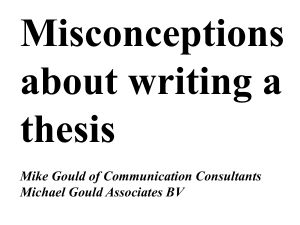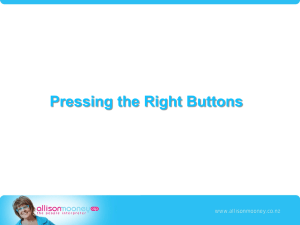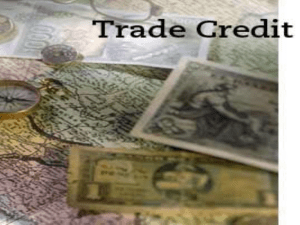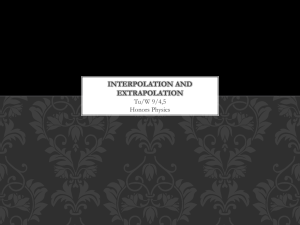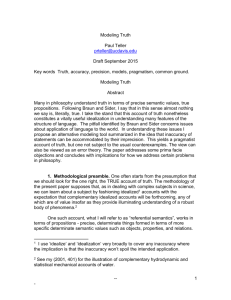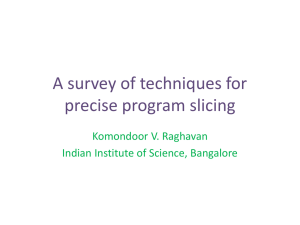Thomas Presentation
advertisement
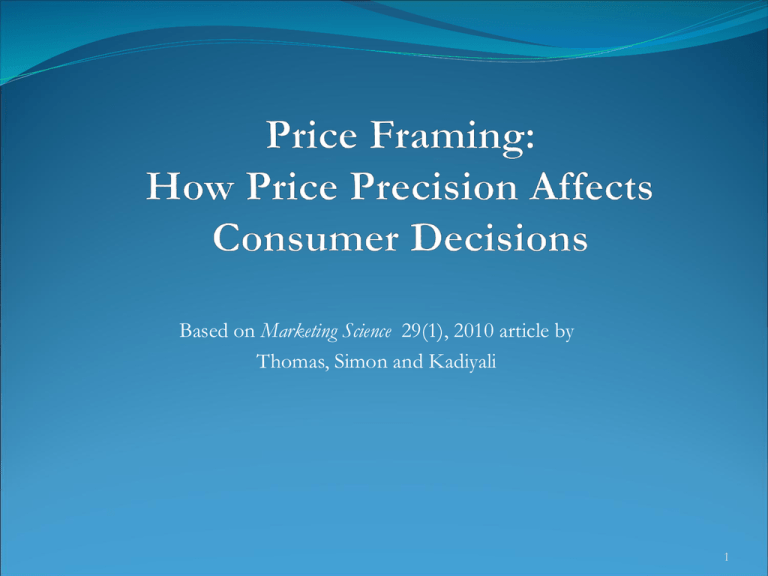
Based on Marketing Science 29(1), 2010 article by Thomas, Simon and Kadiyali 1 4 Steps in Price Setting Cost-based Pricing Min Price: The minimum price below which the product will make a loss (or unacceptable profit) Value-based Pricing Max Price: The maximum price above which the buyers will not consider the product to be of acceptable value Profit Optimization Profit-Optimizing Price: Choose a price between the Min-Price & Max-Price to optimize profits based on demand & competitive factors Price Framing Framing: Frame the profit-optimizing price to elicit the most favorable psychological response from buyers This paper illustrates a tactic that sellers can use in the fourth step of price setting 2 Let’s say the seller has decided that her house should be listed at about $340,000….. This price is based on various considerations The cost of buying this house for the seller (cost-based pricing) Assessed value of the house by county tax office (value-based pricing) Price of similar homes sold recently (competitor-based pricing) Now, should the price be $340,000 or a more precise price of $341,450? How will framing the price as a precise price influence buyer behavior? Note that while we’re talking about houses, the same logic applies to cars, groceries, etc. 3 How will a buyer respond when she see a precise price of $341,450? Price Precision influences buyers’ responses in several ways: Precise prices are a less familiar and therefore less “fluent” than round prices. This disfluency triggers a series of attributions in the buyer’s mind. Attribution 1: Precise numbers are normally used for smaller magnitudes; larger magnitudes are usually rounded A baby weighs 7 lbs 6 oz, whereas a grown-up weighs about 145 lbs. A gallon of petrol costs $2.79 but a car costs about $25,000. Therefore a precise price reflects a smaller magnitude Attribution 2: A precise price reflects seller’s unwillingness to negotiate because it has been carefully calculated Attribution 3: A precise price reflects a fair price because it has been carefully calculated 4 So, when a buyer sees a (disfluent) precise price, They have to think harder about what these prices mean, and hence are more uncertain about the magnitude of this price They tend to use heuristic rules to resolve their Seller sets precise list price Buyer’s Uncertainty in judgment Uncertain Heuristic Judgment feeling of uncertainty This leads the buyers to believe that these precise prices are smaller than round prices of similar magnitude; that is $341,450 seems smaller than $341,000 Precise numbers are usually smaller Buyer judges precise prices to be lower And hence buyers are more likely to buy the item listed for a precise price Precision increases WTP 5 Results of Empirical Studies Testing Causality: Laboratory and on-line experiments showed the price precision affects magnitude judgments. Testing External Validity: Also verified this on about 16,000 completed home sales in Florida and New York state. Regression models revealed that houses with precise prices sell at a higher value than houses with round prices 6 Results of Regression Analysis Consider two houses in Long Island in the same zip code, with the same number of rooms and other features, one with a list price of $485,000 and the other with a more precise list price of $484,880 or $485,120. Our results suggest that the house with the more precise list price will sell for about $1,200-$1,450 more. 7




